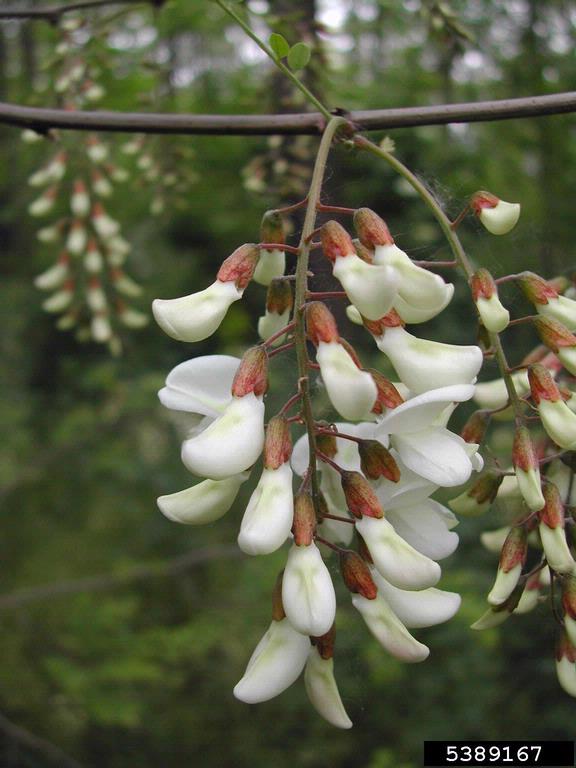 October’s Weed of the Month is a tree called black locust (Robinia pseudoacacia). Black locust is native to North America but not native to Minnesota. It has been widely planted as an ornamental plant and for erosion control, and has been documented to be invasive in the upper Midwest.
October’s Weed of the Month is a tree called black locust (Robinia pseudoacacia). Black locust is native to North America but not native to Minnesota. It has been widely planted as an ornamental plant and for erosion control, and has been documented to be invasive in the upper Midwest.Black locust is a fast growing tree in the legume family. Seedlings have long pairs of thorns, and mature trees can reach 40-90 feet in height. The leaves are alternate, pinnately compound with 7-21 oval leaflets. The bark of mature trees is dark brown and deeply furrowed with flat topped ridges. Flowers are showy, fragrant, and white, and appear in May through June on drooping clusters. Seeds form in bean-like pods that are 2-4 inches long. The trees form colonies by suckering from the roots, especially after being cut or damaged.
Black locust is native to temperate forests and wooded slopes in the southern Appalachians and Ozarks. It spreads primarily through intentional human plantings and disturbance. The seeds are long lived and can spread by wind. The seedlings are fast growing which allow the species to colonize an area quickly. Once established, the trees reproduce vigorously by root suckering and stump sprouting to form thick groves. Black locust can outcompete other tree species and native plants to form a monoculture on disturbed sites.
Black locust is a Restricted Noxious Weed in Minnesota. Although landowners are ultimately not required to control or eradicate Restricted Noxious Weeds on their properties, they are encouraged to manage black locust appropriately to prevent future spread of this species and degradation of native habitats.
Several management tactics are available for black locust. For all options, infestation sites will need to be monitored and treated repeatedly until the seedbanks are depleted. Stumps and sprouts that appear to have died can resprout after several years.
- Mowing and burning can stimulate suckering and clone production so is only recommended in conjunction with herbicide treatment.
- Large infestations can be managed with cut-stump or basal bark herbicide applications. Herbicides applied to the stems or cut stumps spread into the root system and provide better control. Foliar applications of herbicide can be effective when combined with revegetation efforts. When using herbicide treatments, always check with your local University of Minnesota Extension Agent, co-op, or certified landscape care expert for assistance and recommendations. There are several businesses throughout the state with certified herbicide applicators that can be hired to perform herbicide applications.

